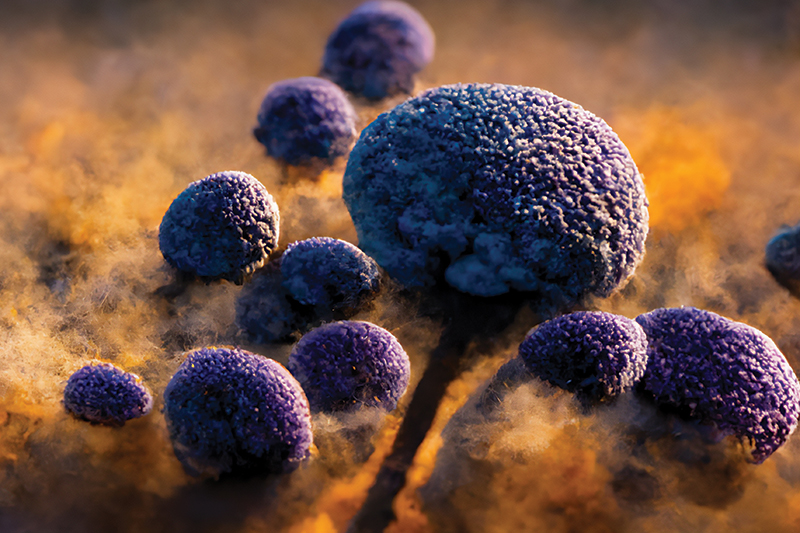Mold infestations in homes not only pose visible issues but also bring about invisible threats in the form of mycotoxins. These toxic compounds produced by certain molds can lead to severe health problems, making thorough remediation crucial for ensuring the safety of occupants. When combating mycotoxins, fine particulate cleaning techniques are paramount for effective mold removal and mycotoxin mitigation.
1. Understanding Mycotoxins
Mycotoxins are toxic secondary metabolites produced by molds as a defense mechanism. These compounds can contaminate indoor environments during mold growth and pose serious health risks when inhaled or ingested. Common mycotoxins include aflatoxin, ochratoxin, and trichothecenes, among others. Each has its own set of health implications, ranging from respiratory issues to neurological disorders.
2. The Need for Fine Particulate Cleaning
Fine particulate cleaning involves the removal of microscopic mold spores and mycotoxin particles from indoor surfaces and the air. Unlike visible mold growth, mycotoxins can persist even after visible mold has been remediated, as traditional remediation methods do not address mycotoxins. Mycotoxins necessitate thorough cleaning methods that target these microscopic contaminants.
3. Effective Fine Particulate Cleaning Techniques
HEPA Vacuuming: High-efficiency particulate air (HEPA) vacuum cleaners are essential for capturing mold spores from surfaces and the air. These vacuums use specialized filters capable of trapping particles as small as 0.3 microns, ensuring thoroughly cleaning contaminated areas. Mycotoxins are smaller than 0.3 microns and require additional methods/treatments.
- Air Filtration Devices: Portable HEPA air purifiers can help remove mold spores from indoor air, improving air quality and reducing the risk of respiratory exposure. These devices can be particularly beneficial after a remediation to help maintain a healthy environment. However, these methods will not cure a home until the source is identified and corrected. We typically recommend Air cleaners after a remediation to help maintain air quality.
- Microfiber Cloth Wiping: Using microfiber cloths dampened with our enzyme solution (or commercial mold product; check safety first to be sure it can be used on different surfaces) can effectively remove mold spores and mycotoxin residues from surfaces. Microfiber’s unique structure allows it to trap and hold particles, providing efficient cleaning.
- Dust Removal: Mold spores and mycotoxins often settle on items containing dust. Therefore, a detailed dust cleaning will help remove settled spores and mycotoxins.
- HVAC: As mold matures and spores are released with mycotoxins, they often find their way through our homes’ air systems, spreading throughout the home. In addition, HVAC can also be responsible for mold colonies themselves. It’s important to have a professional HVAC and duct cleaning completed and check the humidity the AC puts out. In Florida, this can be a significant source of the spread of mold if the humidity is not kept below 60% in your home.
- Air Cleaning: As cleaning occurs, it is common to have particulates increase in the air. Therefore, it is vital that the air in your home is clean by exchanging the inside air and particulates with the outside or employing a method of air scrubbing. Keep in mind that traditional air cleaning using HEPA filters, while capable of removing mold, will not be effective for mycotoxins. Mycotoxins typically require a fogging by a product like MycotoxinKlear by U.S. Enzyme.
4. Professional Remediation Considerations
While DIY cleaning methods can be effective for minor mold problems, severe infestations, and mycotoxin contamination often require professional remediation services. Certified mold remediation professionals have the expertise, equipment, and specialized cleaning agents necessary to safely and effectively address mycotoxin exposure and ensure thorough remediation of affected areas.
5. Prevention and Maintenance
Once remediation efforts are complete, proactive measures should be taken to prevent mold recurrence and maintain indoor air quality. This includes addressing moisture issues, improving ventilation, implementing routine cleaning, monitoring humidity levels, and general maintenance practices to minimize the risk of mold growth and mycotoxin contamination.
Combatting mycotoxins in mold-infested environments requires a comprehensive approach that includes fine particulate cleaning techniques to remove microscopic contaminants. If you have had mold remediation but still have health issues, it may be related to the mycotoxins left behind. This is common, as traditional methods will not remove mycotoxins. A combination of techniques can restore a home to a healthy environment, but professional remediation may be required to address mycotoxins. For more information, visit www.AMEswfl.com or email info@americanmoldexperts.com.
Julie Nicoll runs a fully licensed, bonded, women-owned business with two generations in mold remediation. She holds educational sessions for industry conferences and is a regular author of issues related to mold, mycotoxins, and patient mold illness, having herself been a victim of mold toxicity. She and her partner developed a green solution alternative to removing toxic mold and mycotoxins. Julie can be reached at: info@americanmoldexperts.com.
